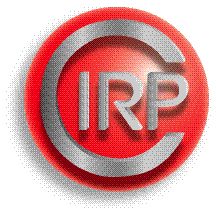Definition
According to Macherauch et al. (1973), “residual stresses are rigidly effective, multiaxial stresses in a solid system that remain without external forces and moments and are in a mechanical equilibrium.” This means that residual stresses are pure internal stresses of a workpiece or a part component. Furthermore, changes in the residual stress distribution are always combined with changes of the part because a new mechanical equilibrium is established after a disturbance of the initial equilibrium.
Theory and Application
Introduction
Residual stresses can be distinguished in macrostresses (Type I) and microstresses (Types II + III) which are characterized by the scale at which they exist within a material. Macrostresses occur over long distances within a material, whereas microstresses exist only locally between workpiece grains or inside a grain (Macherauch et al. 1973).
Type I stresses: Macrostresses are almost homogenous over large distances that involve many workpiece...
References
Balart MJ, Bouzina A, Edwards L, Fitzpatrick ME (2004) The onset of tensile residual stresses in grinding of hardened steels. Mater Sci Eng A 367(1–2):132–142
Brinksmeier E (1982) Randzonenanalyse geschliffener Werkstücke [Surface integrity analysis of ground workpieces]. Dr.-Ing. Diss., Universität Hannover, VDI-Verlag (in German)
Brinksmeier E, Cammett JT, König W, Leskovar P, Peters J, Tönshoff HK (1982) Residual stresses – measurement and causes in machining processes. Ann CIRP 31(2):491–510
Brockhoff T, Brinksmeier E (1999) Grind-hardening: a comprehensive view. Ann CIRP 48(1):255–260
Heinzel C, Bleil N (2007) The use of the size effect in grinding for work-hardening. Ann CIRP 56(1):327–330
Jawahir IS, Brinksmeier E, M’Saoubi R, Aspinwall DK, Outeiro JC, Meyer D, Umbrello D, Jayal AD (2011) Surface integrity in material removal processes: recent advances. Ann CIRP 60(2):603–626
Klocke F (2009) Manufacturing processes 2 – grinding, honing, lapping. Springer, Berlin/Heidelberg
Macherauch E, Wohlfahrt H, Wolfstieg U (1973) Zur zweckmäßigen Definition von Eigenspannungen [A contribution to the definition of residual stresses]. Härterei Techn Mitt (HTM) 28:201–211 (in German)
Author information
Authors and Affiliations
Corresponding author
Editor information
Editors and Affiliations
Rights and permissions
Copyright information
© 2016 CIRP
About this entry
Cite this entry
Heinzel, C. (2016). Residual Stress (Abrasive Processes). In: The International Academy for Produ, Laperrière, L., Reinhart, G. (eds) CIRP Encyclopedia of Production Engineering. Springer, Berlin, Heidelberg. https://doi.org/10.1007/978-3-642-35950-7_6602-3
Download citation
DOI: https://doi.org/10.1007/978-3-642-35950-7_6602-3
Received:
Accepted:
Published:
Publisher Name: Springer, Berlin, Heidelberg
Online ISBN: 978-3-642-35950-7
eBook Packages: Springer Reference EngineeringReference Module Computer Science and Engineering


